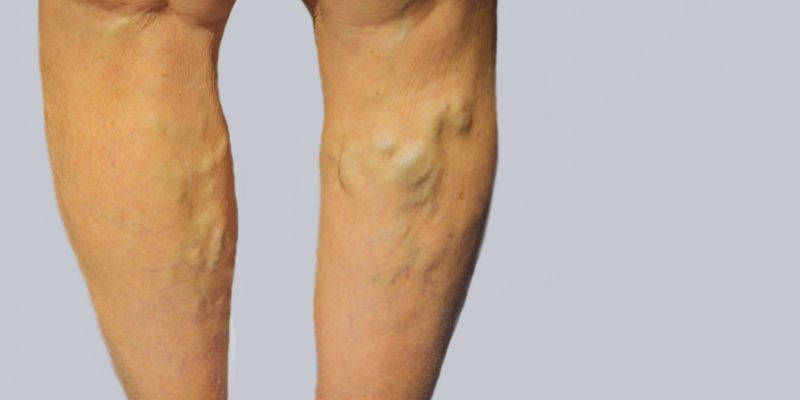What Are Air Squats And What Are Their Benefits: A Complete Understanding
One sort of bodyweight exercise aimed at the lower body is air squats. They are easily available for all fitness levels since they are done without equipment. The correct technique helps air squats increase core and leg muscular tone and flexibility.
Beginners as well as experienced athletes can gain from this easy exercise. Air squats have excellent worth regardless of your goals, strength, calorie burning, or increased flexibility. Let's start with this effective motion's fundamentals, advantages, and variants.

What Are Air Squats?
One kind of squat without extra weight is air squats, sometimes referred to as bodyweight squats. This exercise consists of bending at the knees and hips and then pushing back to a standing posture to lower the body. Focusing on the lower body muscles, especially the quadriceps, hamstrings, and glues air squats, rely on your body weight for resistance.
Though basic, air squats have a great impact. You stand with your feet shoulder-width apart, then lower your hips while maintaining your chest raised. Before returning to the standing posture, one wants to establish a 90-degree angle at the knees. No weights are involved; hence, this is a safe and efficient approach for everyone starting their fitness path or adding variation to a current exercise program.
Benefits of Air Squats for Strength
Although they seem basic, air squats are quite powerful for strengthening the lower body. Targeting big muscular groups such as the quads, hamstrings, and glutes, they provide functional strength that translates to daily motions. For instance, you activate identical muscles when you sit down and stand up, making air squats useful and effective.
Regular air squats help increase lower body strength, boost muscle endurance, and perhaps even increase general stability. Unlike weight-based workouts, air squats depend just on body weight, lowering injury risk. This makes them suitable for everyone at all fitness levels.
Enhancing Flexibility with Air Squats
Air squats have many benefits, chief among them flexibility. Squatting stretches and strengthens the muscles around your knees, hips, and ankles, enhancing joint mobility. Regular air squats will also increase your hips' and lower back's flexibility. This extra adaptability will improve your performance in many other sports and workouts.
One further advantage is that flexible muscles and joints are less prone to stress or damage. By encouraging a full range of motion, air squats help lengthen muscles and ease bodily stiffness. Flexibility makes daily motions easier, from bending over to grab something to reaching higher places.
Air Squats and Cardiovascular Health
Though they might not be the first exercise you think of when considering cardio, air squats increase heart rate. Air squats are bodyweight exercises that easily complete high-rep sets since they require no equipment. That repetition increases your heart rate, gradually improving your cardiovascular endurance.
Including air squats in your program will boost your stamina and heart health. The cardiovascular advantage increases with increasing sets and repetitions you include. Air squats provide a balanced exercise that greatly increases strength and cardio concurrently. Several trainers advise enhancing the cardiovascular effect by including air squats in a circuit or HIIT program.
Improving Balance and Stability with Air Squats
Air squats are perfect for developing stability and balance, which are vital for physical health. The muscles of your core and legs cooperate during an air squat to maintain appropriate alignment and stability. This synchronization builds your core and helps you balance.
Frequent air squats will help improve balance and posture. Not only does better balance help during exercise, but it also lowers the risk of falling and injury in daily life. For older persons, this increased stability can mean more sense of freedom and less danger of accidents, while for athletes, it can boost performance in sports.
Air Squats as a Calorie-Burning Exercise
Air squats are a wise choice to burn calories and lose weight. Air squats are a bodyweight exercise that uses many muscle groups to boost calorie burn in greater repetitions or as a high-intensity workout. Air squats are a great addition to a weight loss program. The more calories you burn, the more muscles you use.
Including air squats into your exercise regimen can help you support your attempts at calorie burning and metabolism support. They demand more energy since they include many joints and big muscle groups, increasing calorie burn. For those trying to keep lean and fit without access to a gym or large equipment, this makes them the perfect solution.

How to Perform Air Squats with Proper Form
The proper performance of air squats is crucial for gaining all the advantages and reducing damage risk. Start by standing with slightly turned-out toes and feet shoulder-width apart. Your chest should remain straight throughout the action; your weight should be on your heels. Bend at the knees, push your hips back, and lower your body like you would be seated in a chair.
Keeping your knees in line with your toes will help prevent joint strain. Go down till, as near as you can, your thighs parallel the ground. Press from your heels back into a standing posture. Developing solid form guarantees that every squat will maximize your results.
Variations of Air Squats for Different Goals
Once you have perfected the fundamental air squat, there are various modifications to aim for particular aims. The following are a few:
- Narrow Stance Squat: Stressing your quadriceps brings your feet closer together.
- Sumo Squat: Stance wide and point your toes to work on the inner thighs.
- Pulse Squats: Maintain the lowest squat posture and pulse up and down for more muscular burning.
- Jump Squats: Finish each squat with a hop to boost intensity and raise your heart rate.
These modifications keep your workouts interesting and help target different muscle regions, diversifying them. As your strength and endurance develop, they also provide an excellent means of advancing your workouts.
How to Add Air Squats to Your Routine
Including air squats in your exercise program is flexible and simple. If you're new to air squats, start with two to three sets of ten to fifteen reps. As your strength grows, increase the repetitions and sets or even add variations to push yourself.
For a complete-body program, consider adding air squats to a circuit workout or combining them with upper-body exercises. They can be included in warm-ups and cool-downs or as part of high-intensity interval training versatility. Over time, air squats will help you increase strength, endurance, and flexibility.
Conclusion:
One very effective, flexible workout with many advantages is air squats. They work for all fitness degrees, from boosting strength and flexibility to strengthening cardiovascular health. Easy to include in any program, air squats strengthen daily life by laying a basis for functional fitness. Beginning with air squats will help you enjoy its several advantages.












